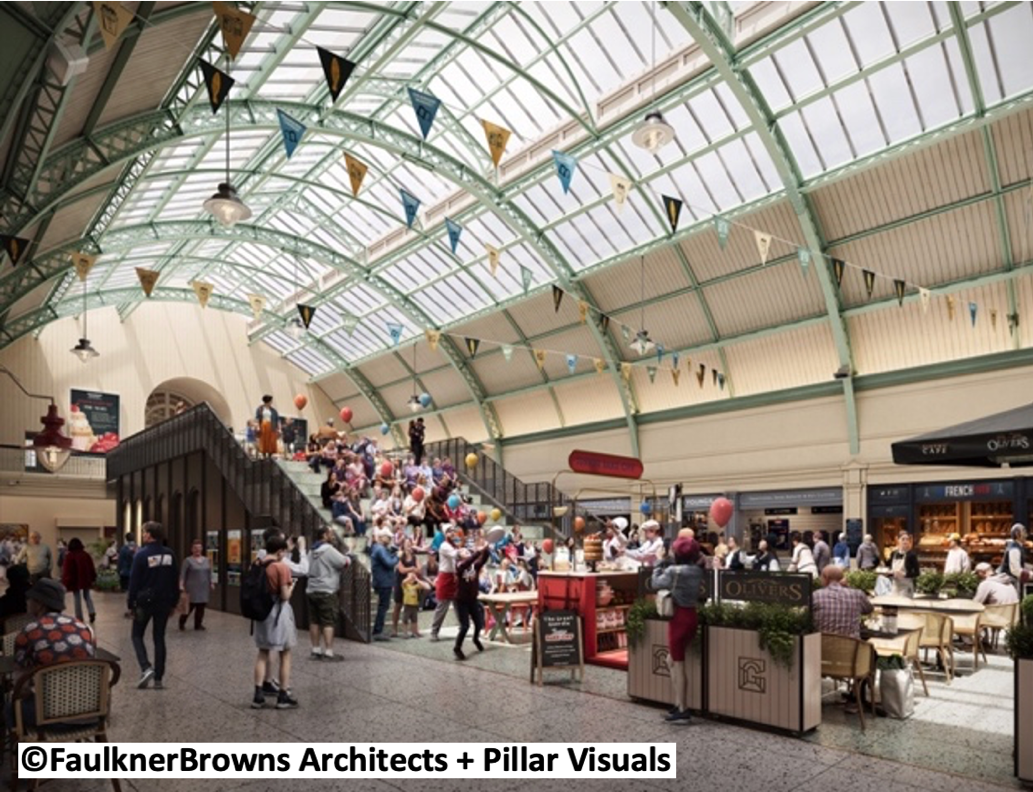The joy of working for a number of clients is the variety that we see and the knowledge that we ourselves gain from each project.
In 2019 we began assisting Newcastle City Council with one of their most celebrated public property ownerships. One that had endured for almost 185 years but was struggling to support itself amongst a competitive and changing retail environment – the Grainger Market.
Amongst the turmoil of lockdown but working with a wonderfully motivated and inspired team we put together the idea of a transformation plan that would broaden the appeal of the market, whilst retaining its incredibly important existing customers and make it more appropriately people centric for the audience of today.
It’s home to more than 100 businesses, including the Marks & Spencer Penny Bazaar, which has been there since 1895.
The Grainger Market first opened William IV was king, Sir Robert Peel was Prime Minister and Charles Darwin was on his way to the Galapagos to look at some finches.
What we realised was that the Grainger Market could tell us a lot about how to adapt to changing times. It’s an institution, and it has been a vital part of daily life since 1835 – and you don’t achieve that without knowing how to ride out a few storms.
The world is an unimaginably different place today, but the market remains at the heart of the city’s retail and social offer, continually responding to what customers want from it, recognising how it has to change to align with their daily lives.
The core proposition is the same – it’s a place where people can get daily essentials, visiting a butcher, a baker and a fruit and veg stall. But around that core offer, the identity of the market has evolved. Now, it’s a place where people can visit all manner of sellers – clothes, collectables, gifts, a jeweler, even an opticians. You can also pick up lunch on the go or stop for a meal – sit and enjoy different environments within a bustling market.
Inherently, the existence of the market – a place where you can buy affordable produce, meet friends, just a few minutes from where your office might be, continues to be so important to attract everyone back to the city again.
The initial vision was put forward as part of the Levelling Up Funding and was successful in securing a substantial grant towards adapting and preserving this important asset. What we hadn’t had the opportunity of doing at that stage was truly engaging with the traders about their aspirations. Something we quickly managed to put right by a detailed and open process.
I’ve had the pleasure to get to know many of the traders through our work, and what’s incredible is the variety. Some are people just starting their business and their spot in Grainger Market might be their first business location outside of their house.
Others might be third or fourth generation holders of the same stall, despite that continuity of service, they’re adaptable because they know their customers better than anyone else and they know what they want. They also have the scale and flexibility to react quickly to what is selling and what isn’t – to change their business model to suit changing times – it’s something the rest of us can learn from.
The last few years have been defined by rapid change in people’s habits – not least how much more time we spend working away from the office and outside of city centres.
What we know now is, when people come to the office, it’s not because it’s where they work, it’s because they have a reason to be there. Some of that will be defined by team catch-ups and collaborative working, but some of it will be defined by the space itself and the outside environment – and that’s where Grainger Market and our city centres can become the real stars.
The great news is that our original vision has now evolved to delivery and the contractors are on site now implementing the changes which will be completed during 2025. We’ve been inherently involved in leading the initial multi discipline design team, the engagement and co design process, the long term business planning and communications about the project

